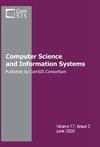系统地利用业务流程中的并行任务执行
IF 1.2
4区 计算机科学
Q4 COMPUTER SCIENCE, INFORMATION SYSTEMS
引用次数: 0
摘要
业务流程再工程(或优化)已经引起了很多关注,它被认为是业务流程管理(BPM)的核心元素。其最有效的机制之一是任务重排序,以减少过程持续时间和成本,而持续时间(也称为周期时间)也可以使用任务并行性来减少。在这项工作中,我们提出了这两种机制的新组合,即资源分配感知。我们的建议从业务流程中的给定资源分配可以驱动底层BPMN图中的优化的解决方案开始,以组合的方式考虑资源分配和模型修改,其中最初的次优资源分配可以导致更好的整体流程执行。更具体地说,主要贡献有两方面:(i)提出了一项建议,该建议利用过程表示的一种变体,即精炼过程结构树(rpst),以期以有原则的方式实现新的资源分配驱动的任务重新排序和并行化;(ii)引入了一种资源分配范例,将任务分配给资源,同时考虑到可能出现的重新排序机会。结果表明,我们可以在很大比例的实验案例中得到改进,而这些改进可以使循环时间减少45%。本文章由计算机程序翻译,如有差异,请以英文原文为准。
Systematic exploitation of parallel task execution in business processes
Business process re-engineering (or optimization) has been attracting a lot of interest, and it is considered as a core element of business process management (BPM). One of its most effective mechanisms is task re-sequencing with a view to decreasing process duration and costs, whereas duration (aka cycle time) can be reduced using task parallelism as well. In this work, we propose a novel combination of these two mechanisms, which is resource allocation-aware. Starting from a solution where a given resource allocation in business processes can drive optimizations in an underlying BPMN diagram, our proposal considers resource allocation and model modifications in a combined manner, where an initially suboptimal resource allocation can lead to better overall process executions. More specifically, the main contribution is twofold: (i) to present a proposal that leverages a variant of representation of processes as Refined Process Structure Trees (RPSTs) with a view to enabling novel resource allocation-driven task re-ordering and parallelisation in a principled manner, and (ii) to introduce a resource allocation paradigm that assigns tasks to resources taking into account the re-sequencing opportunities that can arise. The results show that we can yield improvements in a very high proportion of our experimental cases, while these improvements can reach 45% decrease in cycle time.
求助全文
通过发布文献求助,成功后即可免费获取论文全文。
去求助
来源期刊

Computer Science and Information Systems
COMPUTER SCIENCE, INFORMATION SYSTEMS-COMPUTER SCIENCE, SOFTWARE ENGINEERING
CiteScore
2.30
自引率
21.40%
发文量
76
审稿时长
7.5 months
期刊介绍:
About the journal
Home page
Contact information
Aims and scope
Indexing information
Editorial policies
ComSIS consortium
Journal boards
Managing board
For authors
Information for contributors
Paper submission
Article submission through OJS
Copyright transfer form
Download section
For readers
Forthcoming articles
Current issue
Archive
Subscription
For reviewers
View and review submissions
News
Journal''s Facebook page
Call for special issue
New issue notification
Aims and scope
Computer Science and Information Systems (ComSIS) is an international refereed journal, published in Serbia. The objective of ComSIS is to communicate important research and development results in the areas of computer science, software engineering, and information systems.
 求助内容:
求助内容: 应助结果提醒方式:
应助结果提醒方式:


